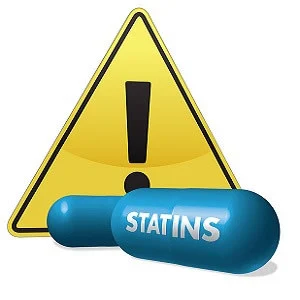According to a new study, muscle-related symptoms are less commonly reported when patients and doctors are unaware that statin therapy is being used as compared to when these patients and doctors are aware. The findings are published in The Lancet.
See Also: Low Adherence to Statins Following Heart Attack
The study evaluated data on 26 side effects from a trial of 10,000 patients aged 40-79 years and suffering from hypertension and at least three other cardiovascular risk factors. Patients received either atorvastatin 10mg or placebo for 3 years. Neither the doctors nor the participants knew whether they were receiving a statin or placebo.
Atorvastatin was shown to be effective at the end of three years. The rate of muscle-related symptoms was similar in both groups in the blinded phase of the study but in the non-blinded phase, muscle-related symptoms were 41% more common in the statin group as compared to the placebo group. This suggests that muscle pain and weakness may not be directly related to statins but in fact may be due to a nocebo effect where patients report the side effects because they expect to have them.
Statins are commonly used in patients who are at a higher risk of heart attack or stroke. Clinical evidence has already concluded that for every 10,000 people who are at high risk, lowering LDL cholesterol with statins could prevent 1000 cases of heart attacks, strokes or coronary bypasses. Some of the known side effects of statin treatment include an increase in the risk of diabetes, haemorrhagic strokes and myopathy.
The issue of muscle pain and weakness however still remains controversial. So far, studies suggest that up to a fifth of patients report these symptoms but these new findings explain why this is so.
Professor Peter Sever, lead author from the National Heart and Lung Institute, Imperial College London, UK, says: "Just as the placebo effect can be very strong, so too can the nocebo effect. This is not a case of people making up symptoms, or that the symptoms are 'all in their heads'. Patients can experience very real pain as a result of the nocebo effect and the expectation that drugs will cause harm. What our study shows is that it's precisely the expectation of harm that is likely causing the increase in muscle pain and weakness, rather than the drugs themselves causing them."
Prof Sever clearly states that the overall benefits of using statins outweigh the harms but claims of statin intolerance are preventing many people from using this affordable and potentially life-saving medicine.
In a linked Comment, Dr Juan Pedro-Botet, Hospital del Mar, and Dr Juan Rubiés-Prat, Universitat Autònoma de Barcelona, Barcelona, Spain, write: "Muscle-related adverse event rates are often argued to be low in randomised controlled trials owing to patient selection. Thus, the strengths of Gupta and colleagues' study lie in the fact that these were the same patients, no run-in period existed to exclude patients intolerant to therapy, and few patients had previously taken any statins. Additionally, the atorvastatin dose typically used in the non-blinded phase was the same as in the blinded phase.... Given that statins are among the best evidence-based lipid-lowering tools available and suitable for many patients, prevention of intolerance is paramount. Thus, physicians should alert their patients to possible statin-associated side-effects without raising negative expectations. Furthermore, they should encourage patient understanding of the rationale for statin treatment, which could optimise and facilitate shared decision making on statin therapy."
Source: The Lancet
Image Credit: The U.S. Food and Drug Administration
References:
Gupta, Ajay et al. (2017) Adverse events associated with unblinded, but not with blinded, statin therapy in the Anglo-Scandinavian Cardiac Outcomes Trial-Lipid-Lowering Arm (ASCOT-LLA): a randomised double-blind placebo-controlled trial and its non-randomised non-blind extension phase. The Lancet; doi.org/10.1016/S0140-6736(17)31075-9
Latest Articles
statins, Muscle-Related Side Effects, Nocebo Effect
According to a new study, muscle-related symptoms are less commonly reported when patients are doctors are unaware that statin therapy is being used as compared to when these patients and doctors are aware. The findings are published in The Lancet.










